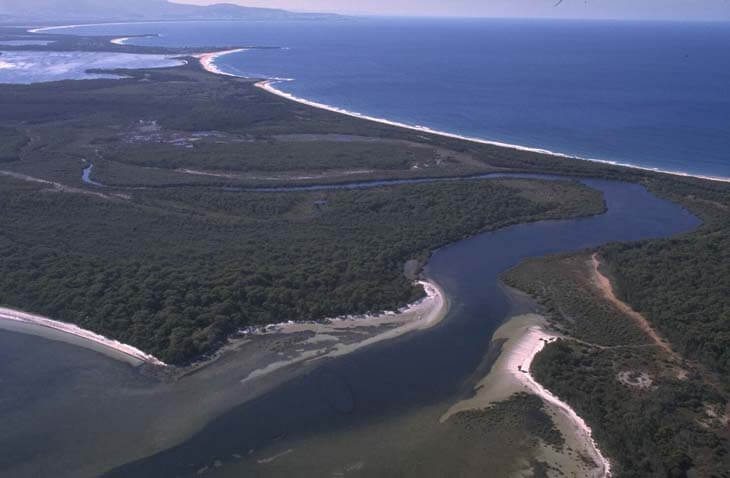Cararma Creek is located on the south coast of New South Wales and flows into the north east part of Jervis Bay. It is classed as a lake that is permanently open to the ocean.
This estuary represents a relatively natural system because the catchment and waterway are protected by conservation areas.
Water quality report card
As part of our water quality monitoring program we assess the water quality and ecosystem health of an estuary using a range of relevant indicators. We sample a subset of the estuaries between Wollongong and the Victorian border every 3 years. The most recent sampling in Cararma Creek was completed over the 2023–24 summer, when 2 sites were sampled on a monthly basis.
This report card represents 2 water quality indicators that we routinely measure: the amount of algae present and water clarity. Low levels of these 2 indicators equate with good water quality. The numerical scores for these 2 indicators are averaged to give the overall grade.
The report card shows the condition of the estuary was excellent with:
- algae abundance graded excellent (A)
- water clarity graded excellent (A)
- overall estuary health graded excellent (A).
Grades for algae, water clarity and overall are represented as:
- A – excellent
- B – good
- C – fair
- D – poor
- E – very poor.
Go to estuary report cards to find out what each grade means, read our sampling, data analysis and reporting protocols, and find out how we calculate these grades.
We have monitored water quality in the Cararma Creek estuary since 2011. This table shows the water quality grades for this estuary over that time.
| Year | Algae | Water clarity | Overall grade |
|---|---|---|---|
| 2023–24 | A | A | A |
| 2011–12 | B | A | A |
Physical characteristics
| Estuary type | Lake |
|---|---|
| Latitude | –35 (ºS) |
| Longitude | 150.78 (ºE) |
| Catchment area | 6.8 km2 |
| Estuary area | 2.4 km2 |
| Estuary volume | 2767.4 ML |
| Average depth | 1.2 m |
Notes: km2 = square kilometres; m = metres; ML = megalitres.
Water depth and survey data
Bathymetric and coastal topography data for this estuary are available in our data portal.
Land use
The catchment of Cararma Creek is almost entirely undisturbed forest in Jervis Bay National Park.
National and marine parks
- Cararma Creek is situated within Jervis Bay National Park.
- The Cararma Creek estuary flows into the Jervis Bay Marine Park.
Citizen science projects
- The Budawang Coast Atlas of Life is an online data platform the community can use to record and identify biodiversity.
Community involvement
- Shoalhaven City Council’s Bushcare webpage provides links to a range of active groups in and around this catchment.
- The Shoalhaven Landcare Association represents a range of volunteer groups working in and around the Callala Creek
Local government management
Local councils manage estuaries within their area. Where an estuary is attached to a marine park, marine park management teams are responsible for ensuring compliance with marine park zoning.
Shoalhaven City Council manages this estuary, which is located in Jervis Bay Marine Park.
Threatened species
The catchment of the Cararma Creek estuary provides critical habitat for the endangered eastern quoll. A conservation program involves translocating this threatened species from Tasmania to this area.
Read more about the biodiversity in our estuaries.
